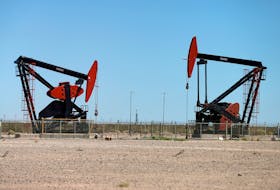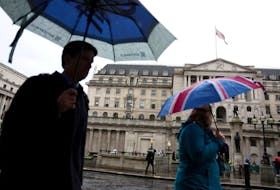BROOKFIELD, N.S. – A Nova Scotia Supreme Court judge will not allow a toxic chemical expert to provide evidence at a review of the province’s decision to allow Lafarge Canada to burn tires at its cement plant near Brookfield.
In a written decision released Friday, Justice Denise Boudreau said the admission of evidence from Douglas J. Hallett would be an inappropriate distraction to the court proceedings.
“With the greatest of respect to Dr. Hallett, in my view his evidence will not assist the court in our specific role here, as a judicial review,” Boudreau said.
The company’s one-year pilot project to burn about 400,000 discarded tires in its kiln passed its environmental assessment test before provincial Environment Minister Iain Rankin in early July.
A group of residents adamantly opposed to the tire burning applied to the Supreme Court in August for a judicial review of Rankin’s decision. The notice claims the minister’s decision failed to properly consult the public, protect human health and prevent pollution.
Boudreau will hear the review on March 6 and 7.
The residents group made a subsequent motion to the court for the inclusion of a report from Hallett as additional evidence to support its argument. In an affidavit filed with the court, Hallett described several technical issues that he said call into question the reasonableness of Rankin’s decision to permit tire burning.
“It does not support, in any reasonable manner, the conclusion that the project can be established and operated without adverse effects or significant environmental effects,” Hallett said.
Hallett questioned if Rankin’s conclusions were based on scientific and empirical evidence. His affidavit also asked if the Environment Department had disclosed a complete analysis of pollutants and toxic metal oxides from the disposal of ash residue and if it had adequately consulted with local residents and Environment Canada.
Hallett indicated that he would prepare and file a report, if the court permitted it.
Lawyers for the Environment Department and the company argued in court in December that new evidence and opinions cannot be introduced during a judicial review.
“Generally speaking, courts have not permitted the introduction of new evidence beyond the record on an application for judicial review,” Boudreau wrote in her decision.
“Since the new evidence was not before the minister when his decision was made, it cannot assist in determining whether he made a reasonable decision on the evidence before him.
“A judicial review is, put simply, a review of a decision made by an administrative decision-maker. It is not a trial, nor is it a ‘retrial’ of the question before the administrative decision-maker.”
Fred Blois, a member of the citizens group, said he was not surprised by the judge’s decision.
“It’s a disappointment, but going into this we were warned by our lawyer (William Mahody) that we didn’t have a good chance because there is no precedent,” Blois said.
Lafarge applied to the Environment Department in November for industrial approval of its pilot project, which it says will result in a 30 per cent cut in carbon emissions and a 15 per cent reduction in nitrogen oxides by replacing coal and petcoke as kiln fuels.
The company has said that it will spend about $2 million to get the plant ready for the tire-burning project, more than $800,000 of which has already been invested in emissions-monitoring equipment.
The department has until early March to make a decision on the company’s industrial approval application. Robert Cumming of Lafarge Canada said last week that if the industrial approval is granted, the company would be ready to burn tires by late summer or early fall.
– THE CHRONICLE HERALD








